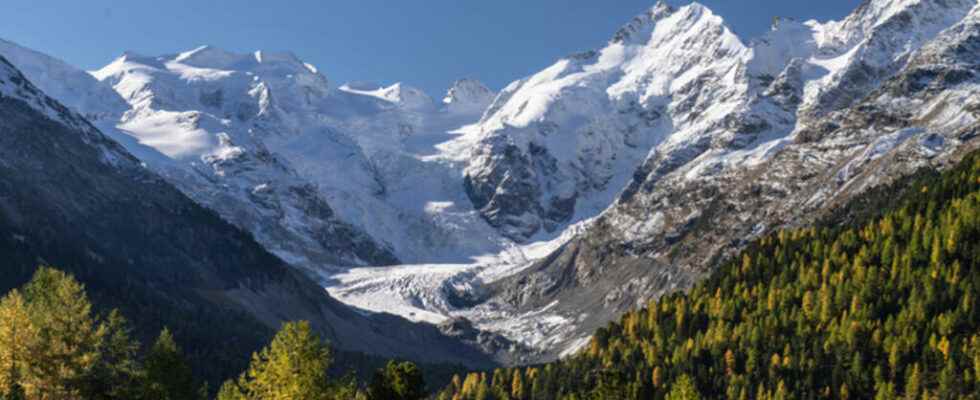According to a study conducted by researchers from the University of Lausanne (Switzerland) and whose results were published Thursday, June 2 in the reference journal Science, vegetation has increased on almost 80% of the surface of the Alps above 1700 m. Antoine Guisan, biologist and co-author of the study, does not hide his concern.
RFI: What is the new scientific fact provided by your study with regard to what we already knew about the effects of climate change in the mountains?
Antoine Guisan: To our knowledge, this is the first study which shows a clear decline in eternal snow at high altitudes, and such significant greening. We focused on areas above 1700m across the whole of the Alps. In these areas, vegetation has increased over 77% of the surface in 40 years. It’s spectacular, we didn’t expect it. At the same time, the surface of eternal snow has decreased by almost 10%, which is a lot.
The reason why snow receded over less area than vegetation increased could be that only the presence or absence of snow could be measured by satellite, while a more gradual change was measured for plant biomass. . However, if the images used show a shrinking of the extent of the snow, they say nothing about its thickness, which may have decreased and which could therefore disappear very quickly if the warming continues.
Arctic greening has been studied since the early 1980s. We now know that the entire Alpine arc is also affected by this change, and in a massive way.
How did you work to achieve this result?
From NASA Landsat satellite images. In the past, we had done tests on small areas and we had such strong responses that we thought it would be interesting to see what is happening on the scale of all the Alps.
The other contribution of this study is that we worked with a much finer image resolution than the only previous study also carried out on all the Alps: each pixel examined represents 30 meters by 30 meters of relief, over all the Alpine arc, and this over several hundred images from 1984 to 2021, i.e. almost 40 years. In these very high altitudes, the terrain is so rugged that it is important to be able to work on as precise a resolution as possible. Result, as I said: 77% of these pixels present a clear signal of greening.
A map from SwissTopo helps to understand the evolution of the Alps (Swiss only) between the 1980s and today.
What are the reasons for this plant growth at high altitude?
Climate change, since the Alps have warmed up by 2°C since the industrial era. This is enormous since it is almost twice the world average. This warming leads to a rise in plant species at altitude and therefore also to a rise in the forest line. And one of the precursor signs of this rise in forests is the thickening of the pastures just above the tree line, which turn into moors with rhododendrons, blueberries, and junipers, for example. A vegetation index [le « normalized différence végétation index », NDVI] makes it possible to determine very precisely the increase in this biomass from space.
But more green in the mountains, isn’t that good news ?
This altitude greening could theoretically have a positive point if it allowed more carbon to be captured by the increase in vegetation. But this effect should be relatively negligible on the global climate.
However, there are threats. The first, biological, is that this greening takes place to the detriment of the alpine biodiversity of these altitudes: the flora but also the fauna such as butterflies and other insects linked to host plants, and even soil micro-organisms. Plants that occupy the highest altitudes up to the summits will be challenged by lower altitude species that could not stand the excess frost or the too cold climate. The second, more vigorous, will then replace the first, more fragile, such as the campion, dwarf willows, gentians, or even the edelweiss, which have a very weak growth at these altitudes, sometimes only a few millimeters per year. . There are already clear migrations at altitude. We could thus face major extinctions of alpine species, sometimes unique to the Alps. If they disappear, it will be forever because global extinctions are irreversible.
What other consequences will these upheavals have?
The increase in vegetation combined with the reduction in snow should worsen global warming. When the snow disappears, there is less reflection of the sun’s rays. Vegetation absorbs radiation, warms mountains, which melts snow and glaciers. This creates excitement.
This warming also melts the permafrost, this permanently frozen ground. However, permafrost (or permafrost) is the cement of the mountains. When it thaws, everything goes down, this creates landslides, which we see more and more.
Another threat is the water drying up. In summer, the eternal snows (and the glaciers) partially melt and feed the torrents and the hydroelectric dams. They are also natural drinking water towers for populations and livestock, down to low altitudes. In this sense, our study on this decline of eternal snow is quite worrying.
Is this change reversible?
Yes, from the point of vegetation in any case. If we manage to stabilize the warming, the vegetation should quickly react accordingly. On the other hand, it is more questionable for snow and glaciers, but that is outside my area of expertise, and I prefer to let my cryologist colleagues express themselves on this subject.
► To read also: Heïdi Sevestre, sentinel of the climate in the ice arena
It is therefore essential to do everything today to stop global warming as quickly as possible. The latest IPCC report speaks of only a few years to make a major shift.
► To read also: IPCC report: to limit global warming, “it’s now or never”
